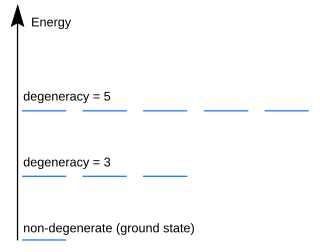Background
The recurrence quantification analysis (RQA) was developed in order to quantify differently appearing recurrence plots (RPs), based on the small-scale structures therein. Recurrence plots are tools which visualise the recurrence behaviour of the phase space trajectory  of dynamical systems:
of dynamical systems:
 ,
,
where  is the Heaviside function and
is the Heaviside function and  a predefined tolerance.
a predefined tolerance.
Recurrence plots mostly contain single dots and lines which are parallel to the mean diagonal (line of identity, LOI) or which are vertical/horizontal. Lines parallel to the LOI are referred to as diagonal lines and the vertical structures as vertical lines. Because an RP is usually symmetric, horizontal and vertical lines correspond to each other, and, hence, only vertical lines are considered. The lines correspond to a typical behaviour of the phase space trajectory: whereas the diagonal lines represent such segments of the phase space trajectory which run parallel for some time, the vertical lines represent segments which remain in the same phase space region for some time.
If only a time series is available, the phase space can be reconstructed by using a time delay embedding (see Takens' theorem):

where  is the time series,
is the time series,  the embedding dimension and
the embedding dimension and  the time delay.
the time delay.
The RQA quantifies the small-scale structures of recurrence plots, which present the number and duration of the recurrences of a dynamical system. The measures introduced for the RQA were developed heuristically between 1992 and 2002 (Zbilut & Webber 1992; Webber & Zbilut 1994; Marwan et al. 2002). They are actually measures of complexity. The main advantage of the recurrence quantification analysis is that it can provide useful information even for short and non-stationary data, where other methods fail.
RQA can be applied to almost every kind of data. It is widely used in physiology, but was also successfully applied on problems from engineering, chemistry, Earth sciences etc.
RQA measures
The simplest measure is the recurrence rate, which is the density of recurrence points in a recurrence plot:

The recurrence rate corresponds with the probability that a specific state will recur. It is almost equal with the definition of the correlation sum, where the LOI is excluded from the computation.
The next measure is the percentage of recurrence points which form diagonal lines in the recurrence plot of minimal length  :
:

where  is the frequency distribution of the lengths
is the frequency distribution of the lengths  of the diagonal lines (i.e., it counts how many instances have length
of the diagonal lines (i.e., it counts how many instances have length  ). This measure is called determinism and is related with the predictability of the dynamical system, because white noise has a recurrence plot with almost only single dots and very few diagonal lines, whereas a deterministic process has a recurrence plot with very few single dots but many long diagonal lines.
). This measure is called determinism and is related with the predictability of the dynamical system, because white noise has a recurrence plot with almost only single dots and very few diagonal lines, whereas a deterministic process has a recurrence plot with very few single dots but many long diagonal lines.
The number of recurrence points which form vertical lines can be quantified in the same way:

where  is the frequency distribution of the lengths
is the frequency distribution of the lengths  of the vertical lines, which have at least a length of
of the vertical lines, which have at least a length of  . This measure is called laminarity and is related with the amount of laminar phases in the system (intermittency).
. This measure is called laminarity and is related with the amount of laminar phases in the system (intermittency).
The lengths of the diagonal and vertical lines can be measured as well. The averaged diagonal line length

is related with the predictability time of the dynamical system and the trapping time, measuring the average length of the vertical lines,

is related with the laminarity time of the dynamical system, i.e. how long the system remains in a specific state.
Because the length of the diagonal lines is related on the time how long segments of the phase space trajectory run parallel, i.e. on the divergence behaviour of the trajectories, it was sometimes stated that the reciprocal of the maximal length of the diagonal lines (without LOI) would be an estimator for the positive maximal Lyapunov exponent of the dynamical system. Therefore, the maximal diagonal line length or the divergence
or the divergence

are also measures of the RQA. However, the relationship between these measures with the positive maximal Lyapunov exponent is not as easy as stated, but even more complex (to calculate the Lyapunov exponent from an RP, the whole frequency distribution of the diagonal lines has to be considered). The divergence can have the trend of the positive maximal Lyapunov exponent, but not more. Moreover, also RPs of white noise processes can have a really long diagonal line, although very seldom, just by a finite probability. Therefore, the divergence cannot reflect the maximal Lyapunov exponent.
The probability  that a diagonal line has exactly length
that a diagonal line has exactly length  can be estimated from the frequency distribution
can be estimated from the frequency distribution  with
with  . The Shannon entropy of this probability,
. The Shannon entropy of this probability,

reflects the complexity of the deterministic structure in the system. However, this entropy depends sensitively on the bin number and, thus, may differ for different realisations of the same process, as well as for different data preparations.
The last measure of the RQA quantifies the thinning-out of the recurrence plot. The trend is the regression coefficient of a linear relationship between the density of recurrence points in a line parallel to the LOI and its distance to the LOI. More exactly, consider the recurrence rate in a diagonal line parallel to LOI of distance k (diagonal-wise recurrence rate or τ-recurrence rate):

then the trend is defined by

with  as the average value and
as the average value and  . This latter relation should ensure to avoid the edge effects of too low recurrence point densities in the edges of the recurrence plot. The measure trend provides information about the stationarity of the system.
. This latter relation should ensure to avoid the edge effects of too low recurrence point densities in the edges of the recurrence plot. The measure trend provides information about the stationarity of the system.
Similar to the  -recurrence rate, the other measures based on the diagonal lines (DET, L, ENTR) can be defined diagonal-wise. These definitions are useful to study interrelations or synchronisation between different systems (using recurrence plots or cross recurrence plots).
-recurrence rate, the other measures based on the diagonal lines (DET, L, ENTR) can be defined diagonal-wise. These definitions are useful to study interrelations or synchronisation between different systems (using recurrence plots or cross recurrence plots).

In mathematics, the Lyapunov exponent or Lyapunov characteristic exponent of a dynamical system is a quantity that characterizes the rate of separation of infinitesimally close trajectories. Quantitatively, two trajectories in phase space with initial separation vector diverge at a rate given by

In physics, Hamiltonian mechanics is a reformulation of Lagrangian mechanics that emerged in 1833. Introduced by Sir William Rowan Hamilton, Hamiltonian mechanics replaces (generalized) velocities used in Lagrangian mechanics with (generalized) momenta. Both theories provide interpretations of classical mechanics and describe the same physical phenomena.

In combinatorial mathematics, the Catalan numbers are a sequence of natural numbers that occur in various counting problems, often involving recursively defined objects. They are named after the French-Belgian mathematician Eugène Charles Catalan.
Ergodic theory is a branch of mathematics that studies statistical properties of deterministic dynamical systems; it is the study of ergodicity. In this context, "statistical properties" refers to properties which are expressed through the behavior of time averages of various functions along trajectories of dynamical systems. The notion of deterministic dynamical systems assumes that the equations determining the dynamics do not contain any random perturbations, noise, etc. Thus, the statistics with which we are concerned are properties of the dynamics.

An inverted pendulum is a pendulum that has its center of mass above its pivot point. It is unstable and without additional help will fall over. It can be suspended stably in this inverted position by using a control system to monitor the angle of the pole and move the pivot point horizontally back under the center of mass when it starts to fall over, keeping it balanced. The inverted pendulum is a classic problem in dynamics and control theory and is used as a benchmark for testing control strategies. It is often implemented with the pivot point mounted on a cart that can move horizontally under control of an electronic servo system as shown in the photo; this is called a cart and pole apparatus. Most applications limit the pendulum to 1 degree of freedom by affixing the pole to an axis of rotation. Whereas a normal pendulum is stable when hanging downwards, an inverted pendulum is inherently unstable, and must be actively balanced in order to remain upright; this can be done either by applying a torque at the pivot point, by moving the pivot point horizontally as part of a feedback system, changing the rate of rotation of a mass mounted on the pendulum on an axis parallel to the pivot axis and thereby generating a net torque on the pendulum, or by oscillating the pivot point vertically. A simple demonstration of moving the pivot point in a feedback system is achieved by balancing an upturned broomstick on the end of one's finger.
In descriptive statistics and chaos theory, a recurrence plot (RP) is a plot showing, for each moment in time, the times at which the state of a dynamical system returns to the previous state at , i.e., when the phase space trajectory visits roughly the same area in the phase space as at time . In other words, it is a plot of
In physics, chemistry, and related fields, master equations are used to describe the time evolution of a system that can be modeled as being in a probabilistic combination of states at any given time, and the switching between states is determined by a transition rate matrix. The equations are a set of differential equations – over time – of the probabilities that the system occupies each of the different states.
A Hamiltonian system is a dynamical system governed by Hamilton's equations. In physics, this dynamical system describes the evolution of a physical system such as a planetary system or an electron in an electromagnetic field. These systems can be studied in both Hamiltonian mechanics and dynamical systems theory.
A quadrupole or quadrapole is one of a sequence of configurations of things like electric charge or current, or gravitational mass that can exist in ideal form, but it is usually just part of a multipole expansion of a more complex structure reflecting various orders of complexity.

In quantum mechanics, an energy level is degenerate if it corresponds to two or more different measurable states of a quantum system. Conversely, two or more different states of a quantum mechanical system are said to be degenerate if they give the same value of energy upon measurement. The number of different states corresponding to a particular energy level is known as the degree of degeneracy of the level. It is represented mathematically by the Hamiltonian for the system having more than one linearly independent eigenstate with the same energy eigenvalue. When this is the case, energy alone is not enough to characterize what state the system is in, and other quantum numbers are needed to characterize the exact state when distinction is desired. In classical mechanics, this can be understood in terms of different possible trajectories corresponding to the same energy.

In classical mechanics, Routh's procedure or Routhian mechanics is a hybrid formulation of Lagrangian mechanics and Hamiltonian mechanics developed by Edward John Routh. Correspondingly, the Routhian is the function which replaces both the Lagrangian and Hamiltonian functions. Routhian mechanics is equivalent to Lagrangian mechanics and Hamiltonian mechanics, and introduces no new physics. It offers an alternative way to solve mechanical problems.
In condensed matter physics and crystallography, the static structure factor is a mathematical description of how a material scatters incident radiation. The structure factor is a critical tool in the interpretation of scattering patterns obtained in X-ray, electron and neutron diffraction experiments.
Virial stress is a measure of mechanical stress on an atomic scale for homogeneous systems. The name is derived from the Latin word vis, meaning force: "Virial is then derived from Latin as well, stemming from the word virias meaning forces." The expression of the (local) virial stress can be derived as the functional derivative of the free energy of a molecular system with respect to the deformation tensor.
In numerical analysis and linear algebra, lower–upper (LU) decomposition or factorization factors a matrix as the product of a lower triangular matrix and an upper triangular matrix. The product sometimes includes a permutation matrix as well. LU decomposition can be viewed as the matrix form of Gaussian elimination. Computers usually solve square systems of linear equations using LU decomposition, and it is also a key step when inverting a matrix or computing the determinant of a matrix. The LU decomposition was introduced by the Polish astronomer Tadeusz Banachiewicz in 1938. To quote: "It appears that Gauss and Doolittle applied the method [of elimination] only to symmetric equations. More recent authors, for example, Aitken, Banachiewicz, Dwyer, and Crout … have emphasized the use of the method, or variations of it, in connection with non-symmetric problems … Banachiewicz … saw the point … that the basic problem is really one of matrix factorization, or “decomposition” as he called it." It is also sometimes referred to as LR decomposition.
Recurrence period density entropy (RPDE) is a method, in the fields of dynamical systems, stochastic processes, and time series analysis, for determining the periodicity, or repetitiveness of a signal.
In statistics and machine learning, lasso is a regression analysis method that performs both variable selection and regularization in order to enhance the prediction accuracy and interpretability of the resulting statistical model. The lasso method assumes that the coefficients of the linear model are sparse, meaning that few of them are non-zero. It was originally introduced in geophysics, and later by Robert Tibshirani, who coined the term.
This article describes Lyapunov optimization for dynamical systems. It gives an example application to optimal control in queueing networks.
In computer science, an optimal binary search tree (Optimal BST), sometimes called a weight-balanced binary tree, is a binary search tree which provides the smallest possible search time (or expected search time) for a given sequence of accesses (or access probabilities). Optimal BSTs are generally divided into two types: static and dynamic.
An ordinary fractal string is a bounded, open subset of the real number line. Such a subset can be written as an at-most-countable union of connected open intervals with associated lengths written in non-increasing order; we also refer to as a fractal string. For example, is a fractal string corresponding to the Cantor set. A fractal string is the analogue of a one-dimensional "fractal drum," and typically the set has a boundary which corresponds to a fractal such as the Cantor set. The heuristic idea of a fractal string is to study a (one-dimensional) fractal using the "space around the fractal." It turns out that the sequence of lengths of the set itself is "intrinsic," in the sense that the fractal string itself contains information about the fractal to which it corresponds.
Fubini's nightmare is a seeming violation of Fubini's theorem, where a nice space, such as the square is foliated by smooth fibers, but there exists a set of positive measure whose intersection with each fiber is singular. There is no real contradiction to Fubini's theorem because despite smoothness of the fibers, the foliation is not absolutely continuous, and neither are the conditional measures on fibers.



































